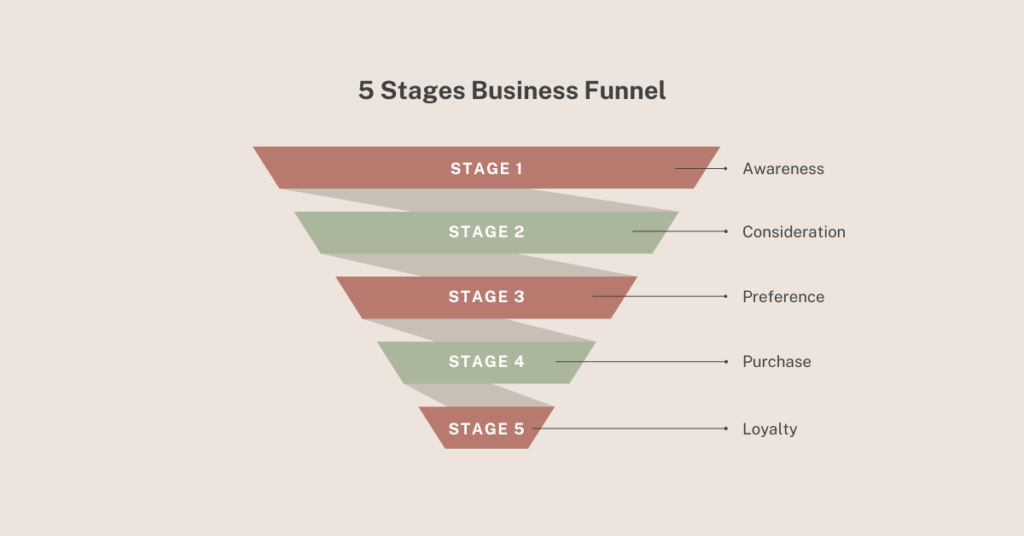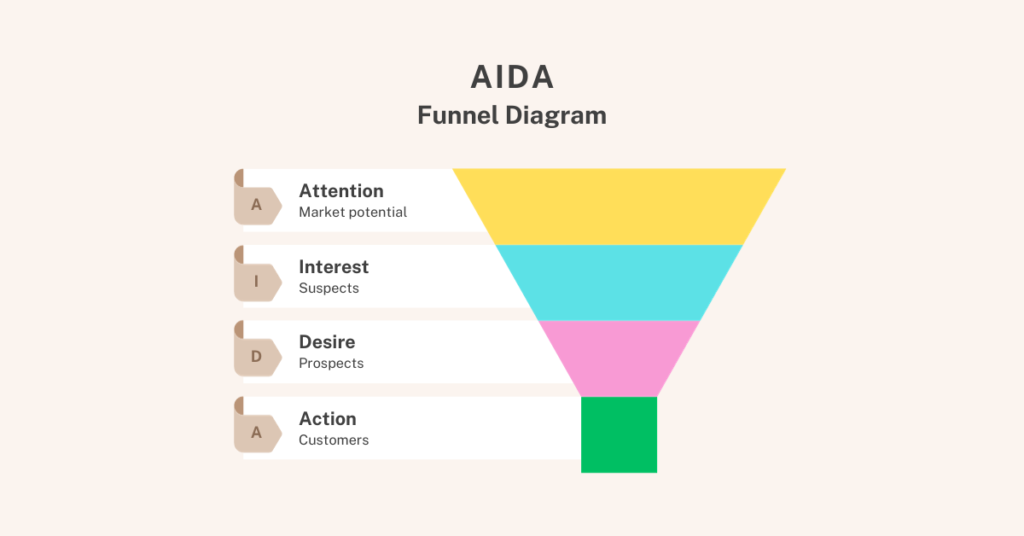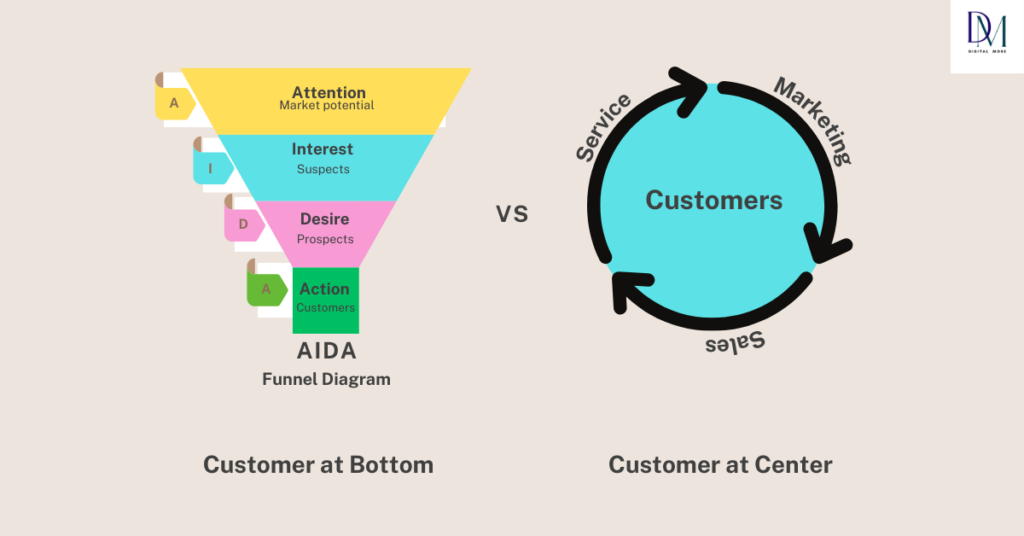
Great Importance of Marketing Funnel in Digital Marketing | 101
Table of contents
| Introduction |
| Stages of marketing funnel |
| Types of marketing funnel |
| Omni-channel & Email marketing |
| B2B vs B2C Use of the Marketing Funnel |
| Flywheel vs Funnel |
| Conclusion |
Introduction
Marketing funnel is a set of stages that every customer goes through before converting into your customer and advocate. It is an age-old concept that has proven its effectiveness, even in the digital era. In today’s online world, a modern digital marketing funnel includes much more detail and stages than the traditional AIDA model. It’s a complex set of actions that every customer takes, including landing pages, advertisements, email newsletters, free demos, and social media posts.
The main purpose of a marketing funnel is to guide customers all the way to the purchase and beyond. In this blog, we will discuss the definition of a marketing funnel, its brief history and importance in digital marketing. By the end of this piece, you’ll have a detailed knowledge of how a Digital funnel helps grow your online business.
Stages of digital marketing funnel
The Digital Marketing Funnel is essentially a roadmap that potential customers follow before they convert into paying customers and advocates. It has several stages that a potential customer goes through before making a purchase. Here are the various stages:

- Engagement – This is the first step in the digital marketing funnel. Here, online stores should focus on engaging potential customers and making them aware of their brand. This can be achieved through social media, ads, email marketing, and reviews.
- Education – Once the potential customer is aware of your brand, you need to educate them about how you can solve their problems. This is an essential part of the funnel, as it helps create a connection between the potential customer and your brand.
- Research – Once you have the potential customer’s attention, you need to provide them with more information about your brand, products, and services. This can be in the form of articles, blog posts, and other forms of content.
- Evaluation – After providing the potential customer with more information, you need to convince them of your brand’s uniqueness. This stage is crucial as it enables the potential customer to compare your brand with that of your competitors.
- Justification – At this stage, you need to address any objections that the potential customer may have about your product or service. This includes price, quality, and other concerns that they may have.
- Purchase – This is the moment the potential customer decides to make a purchase. This stage requires prompt and professional support to convert the potential customer into a paying customer.
- Adoption – Once a customer has made a purchase, show them your attitude, support them and provide helpful information. This can help improve customer satisfaction.
- Retention – This phase is crucial, maintaining satisfied customers can lead to repeat business. This can be achieved by providing excellent customer service, personalized information, and special offers.
The above stages are crucial for a successful Digital funnel. A properly implemented funnel can help businesses attract potential customers, convert them into paying customers, and then turn them into advocates.
Types of marketing funnel

Types of Marketing Funnel: The AIDA model is one of the oldest marketing funnel models, and while it still works, many businesses are moving towards a modern digital marketing funnel. This funnel includes more stages, such as engagement, education, research, evaluation, justification, purchase, adoption, and retention.
Every stage is an opportunity to convert potential customers into paying ones through landing pages, email marketing, social media, and advertisements. This funnel is complex, but effective for guiding clients towards a purchase. It is essential for businesses that want to go online or already have online stores. Whether you use the AIDA model or the modern digital marketing funnel, the goal is the same, to attract and retain satisfied customers.
Omni-channel & Email marketing
Omni-channel marketing is all about providing a seamless customer experience across all channels and touchpoints. It’s about following your customer’s journey and making sure they have a positive experience at every stage. The goal of omni-channel marketing is to create a customer-centric approach that puts your customer’s needs and preferences first. Omni-channel marketing is closely linked to the marketing funnel. Every touchpoint in the customer journey represents a stage in the funnel.
By providing a seamless experience at every stage, you can guide your customers through the funnel and towards a purchase. Email marketing is an important part of any marketing funnel. Emails provide a direct and personalized way to communicate with your customers. You can use emails to educate and engage your customers, to provide them with information about your products or services, and to encourage them to make a purchase.
In conclusion, omni-channel marketing and email marketing are essential components of a successful marketing funnel. By providing a seamless and personalized experience across all channels, you can guide your customers towards a purchase and create a loyal customer base. So, make sure to use them effectively to create a positive customer experience and grow your business.
B2B vs B2C Use of the Marketing Funnel
B2B and B2C marketing funnels have some similarities, but they also have some differences. For example, B2B marketing is typically more focused on building long-term relationships while B2C marketing is usually more focused on immediate sales. B2B marketing includes targeting a small group of decision-makers, while B2C marketing targets a larger group of consumers. Additionally, B2B marketing requires more education and justification of the product or service, while B2C marketing often relies on emotional appeal. Understanding these differences is crucial for creating an effective marketing funnel for your business.
Flywheel vs Funnel

Flywheel vs Funnel: Which One is Better? The concept of the flywheel was introduced by Jim Collins in his book “Good to Great”. The flywheel operates on the premise that the more energy you put into it, the faster it spins. Unlike the traditional funnel, which ends once a customer makes a purchase, the flywheel’s efforts continue beyond conversion. The flywheel model places an emphasis on customer retention and satisfaction, which can lead to increased business growth. While the funnel has been widely used, the flywheel presents an alternative way of looking at the customer journey. The question of which one is better ultimately depends on the specific needs and goals of your business.
Read ‘How to Create Best Digital Marketing Strategy‘
Conclusion
To sum it up, a marketing funnel is crucial for every business to understand and implement in their digital marketing strategy. It helps to guide potential customers through the stages of engagement, education, research, evaluation, justification, purchase, adoption, and retention. With the help of email marketing and an omni-channel approach, businesses can create a personalized experience for their customers, leading to customer satisfaction and advocacy. By understanding the importance of marketing funnels, businesses can attract, engage, and retain customers effectively, leading to growth and success. Remember, happy customers are key to a successful business!

Leave a Reply